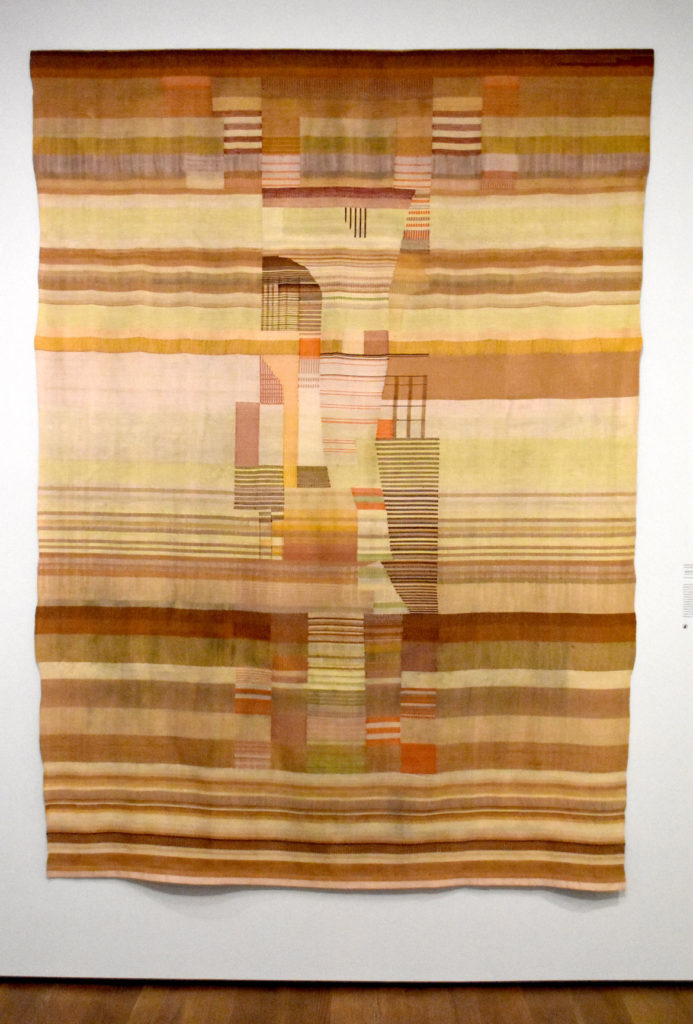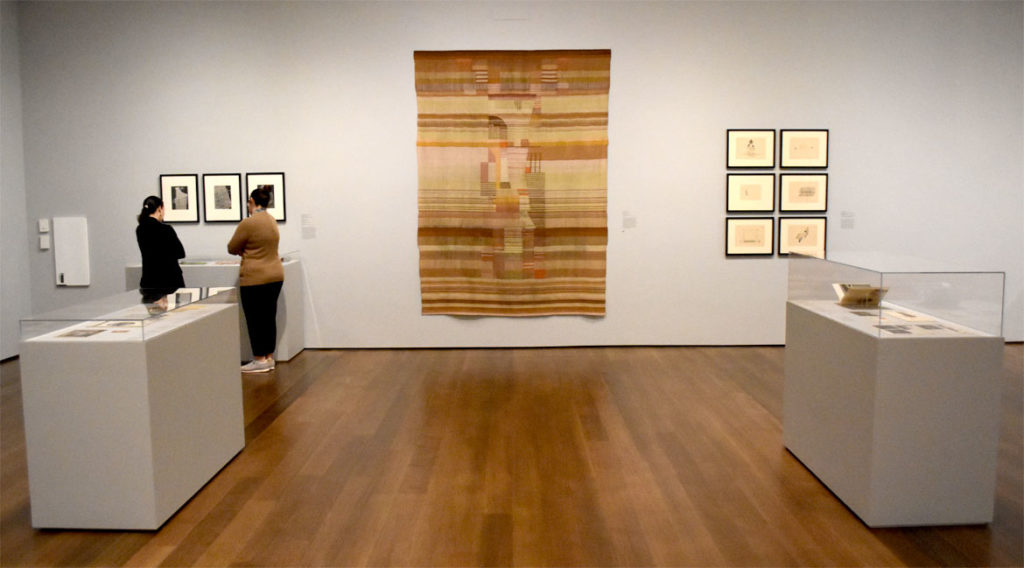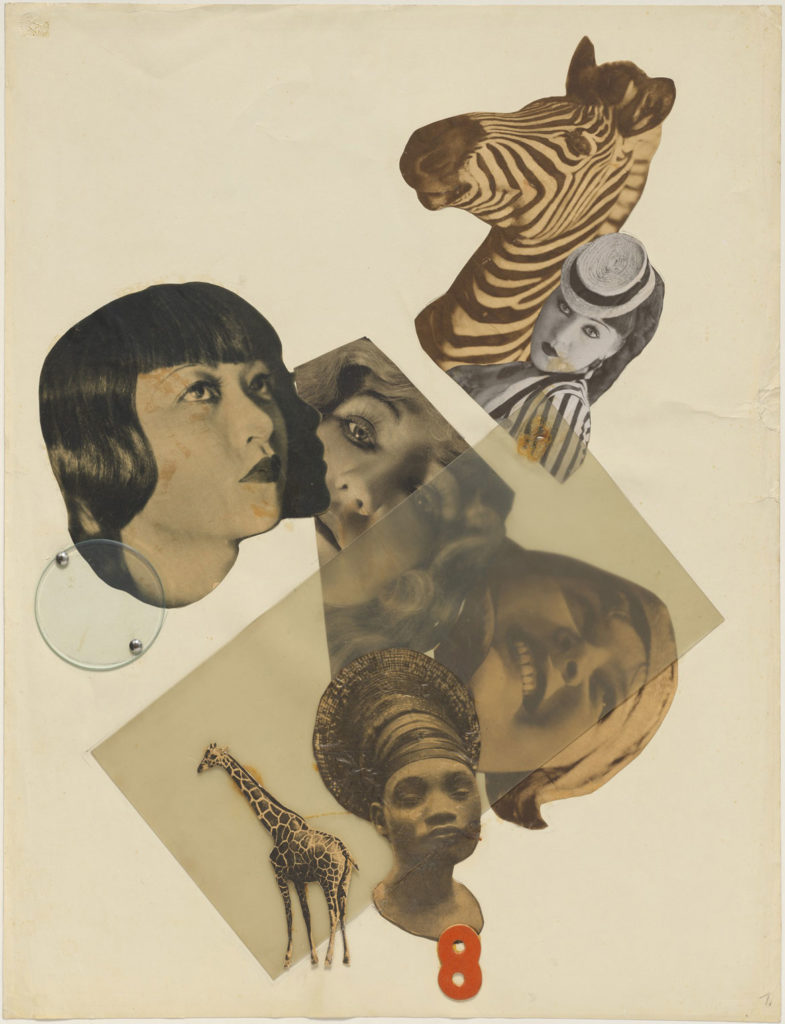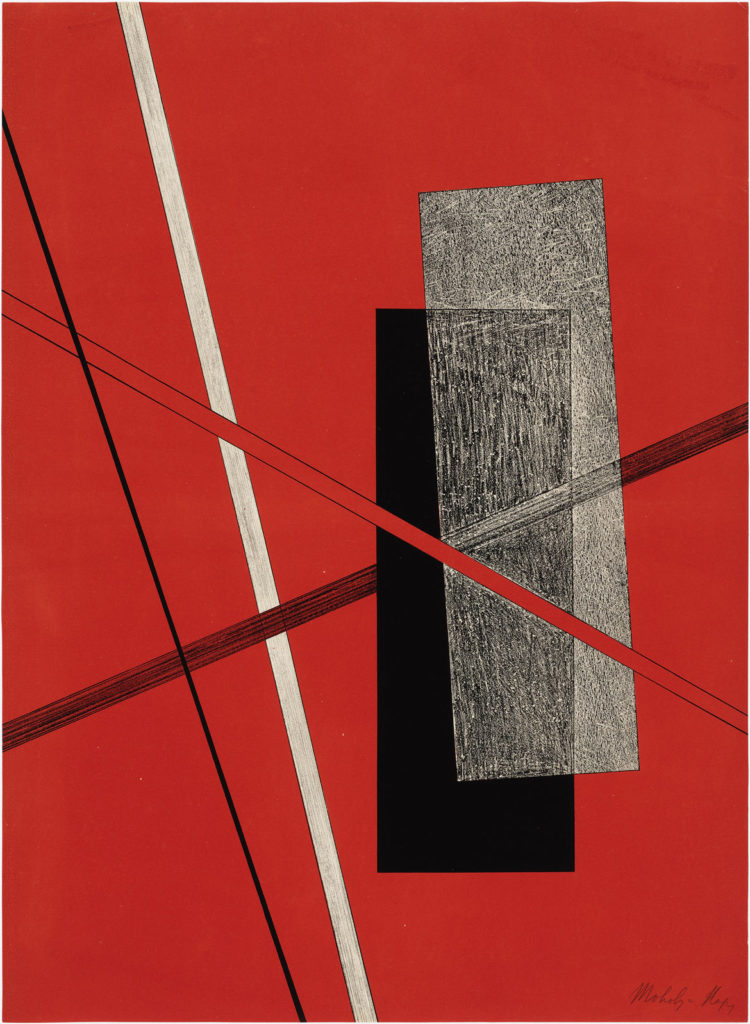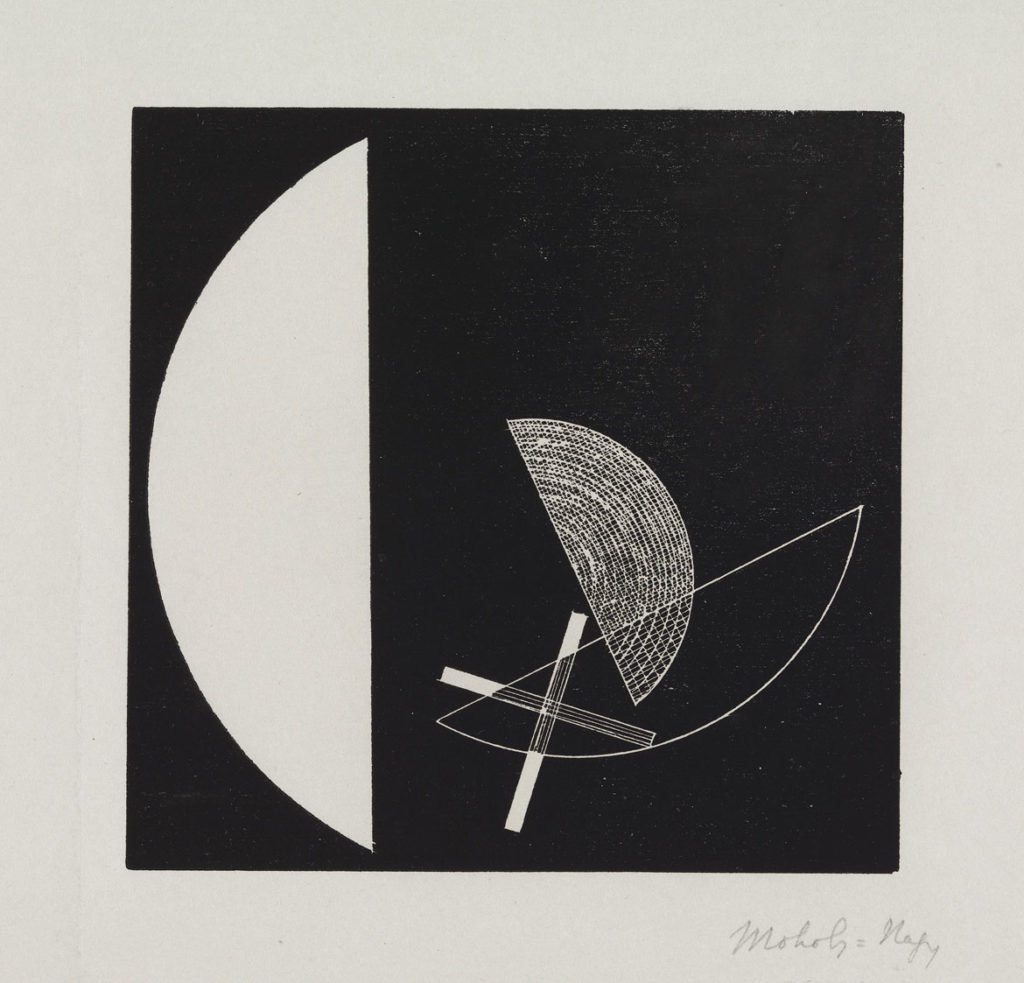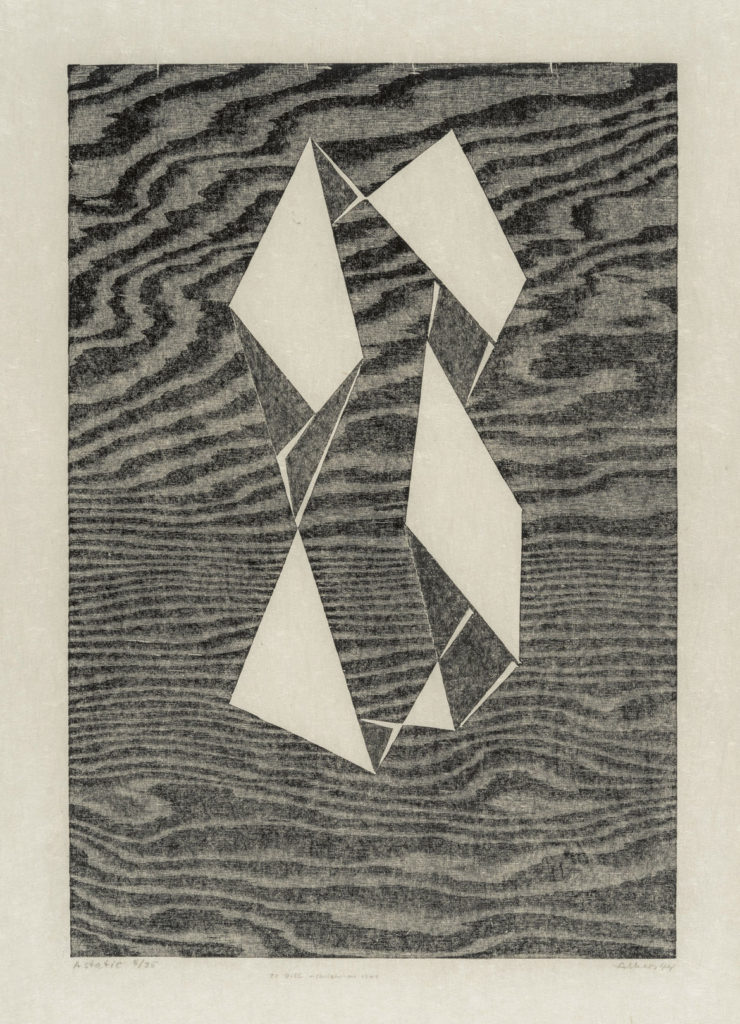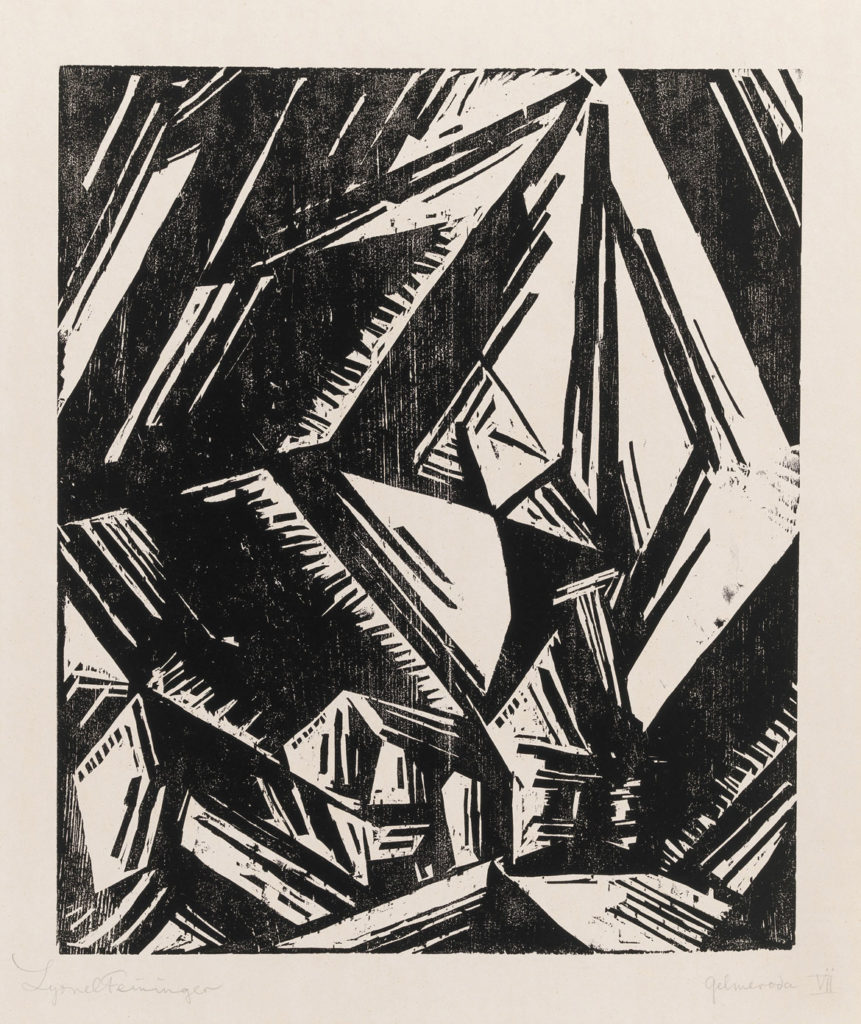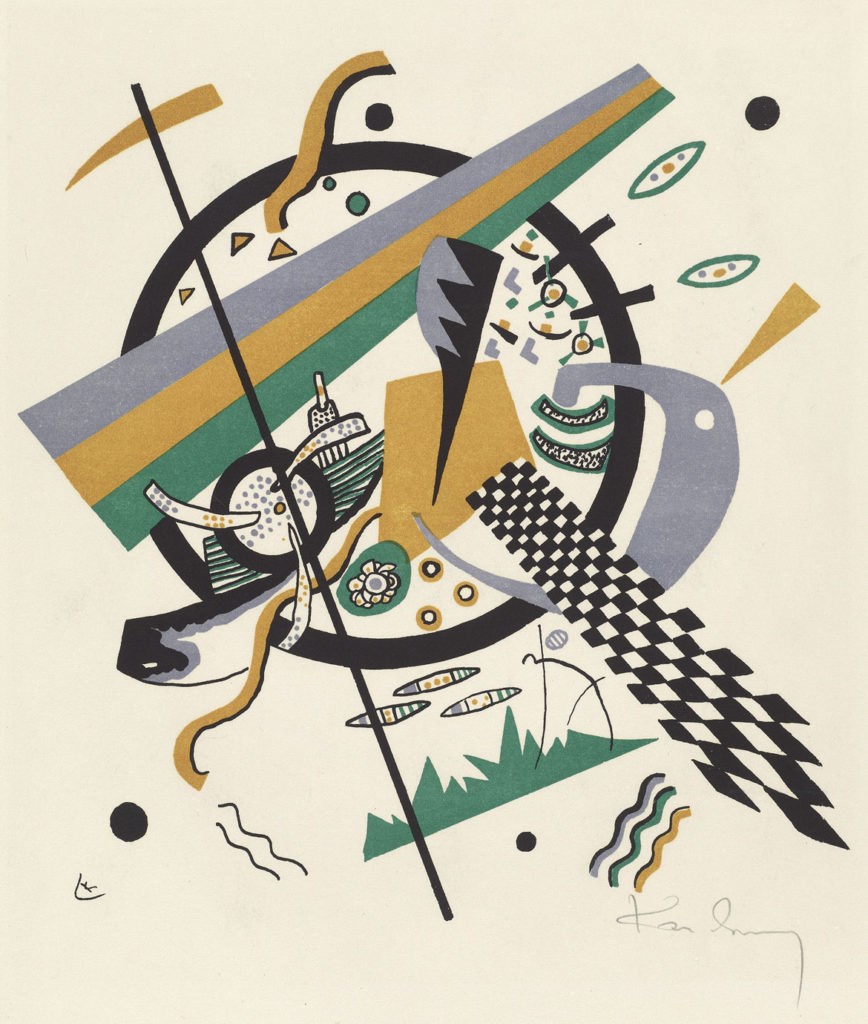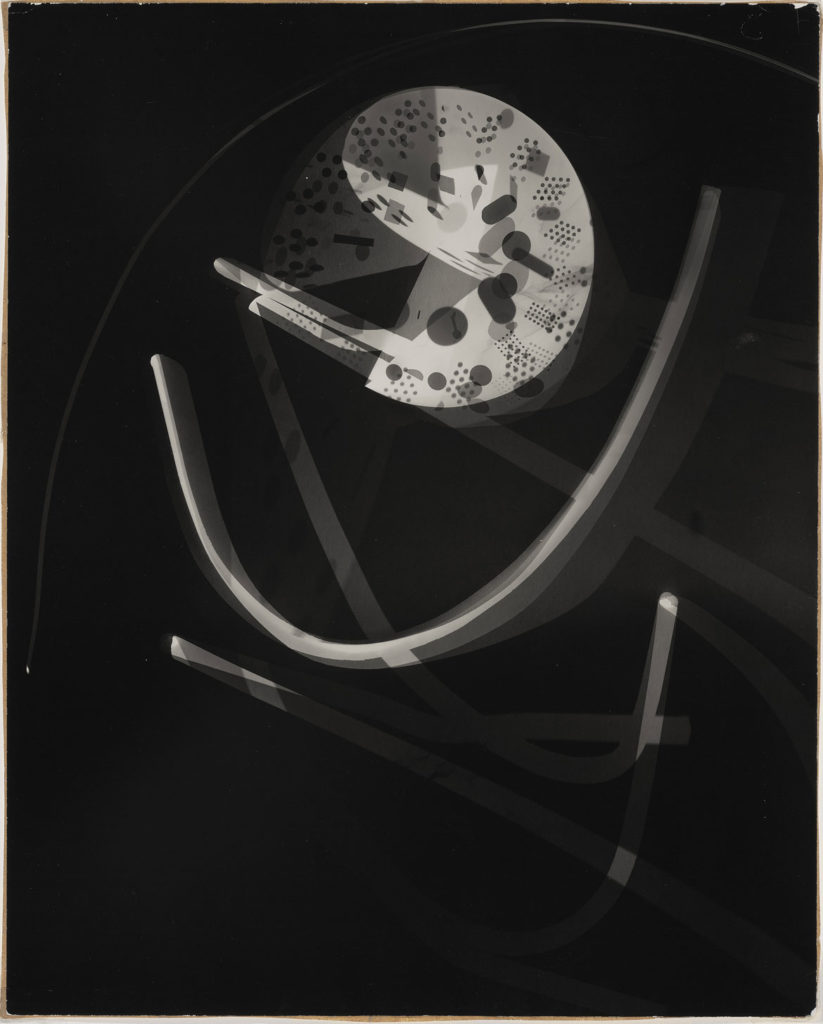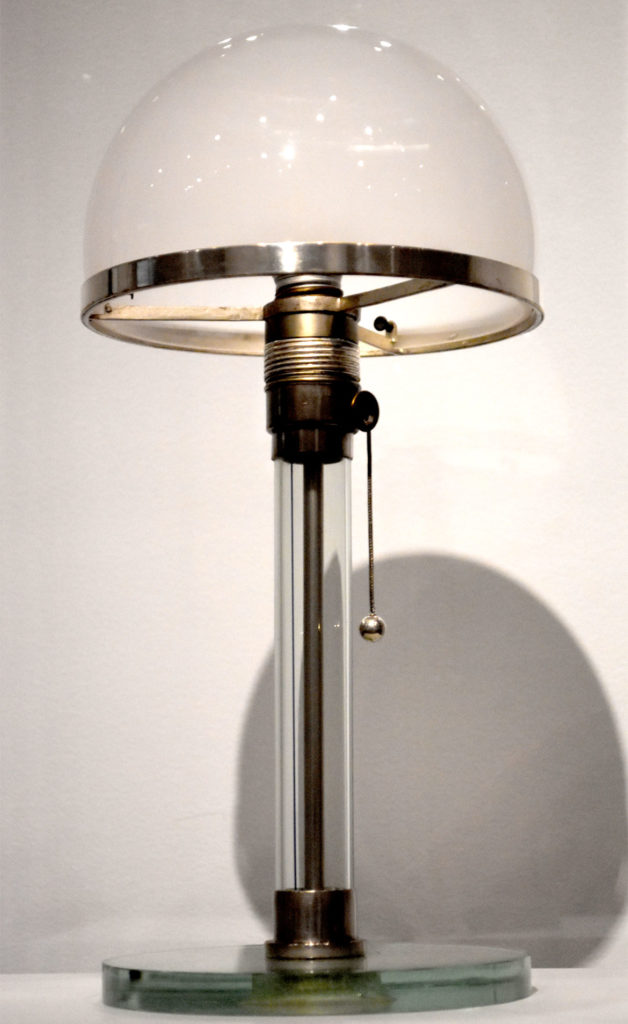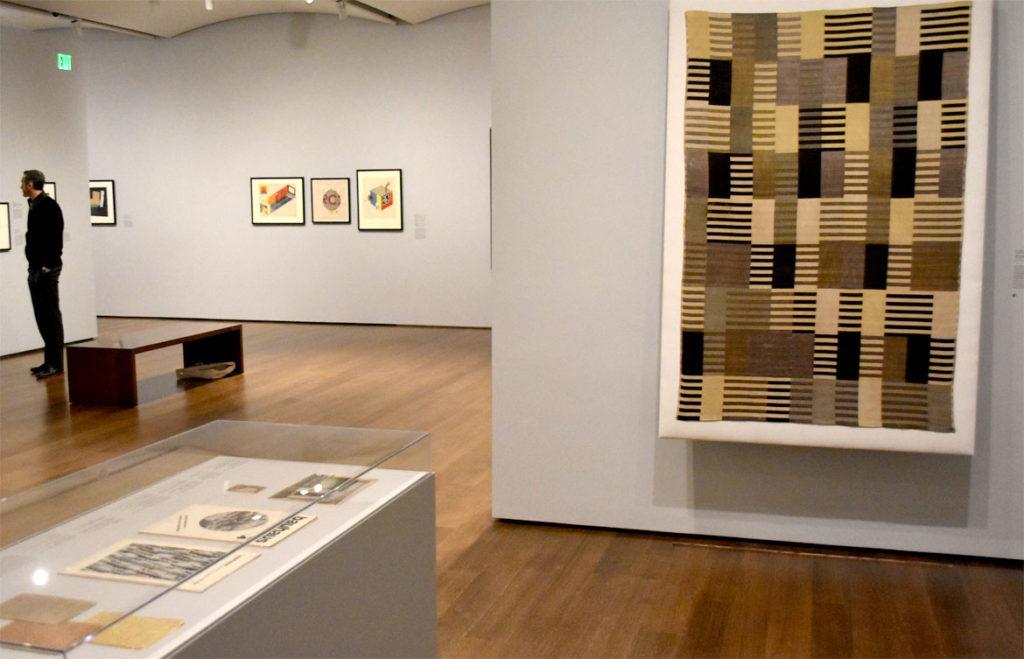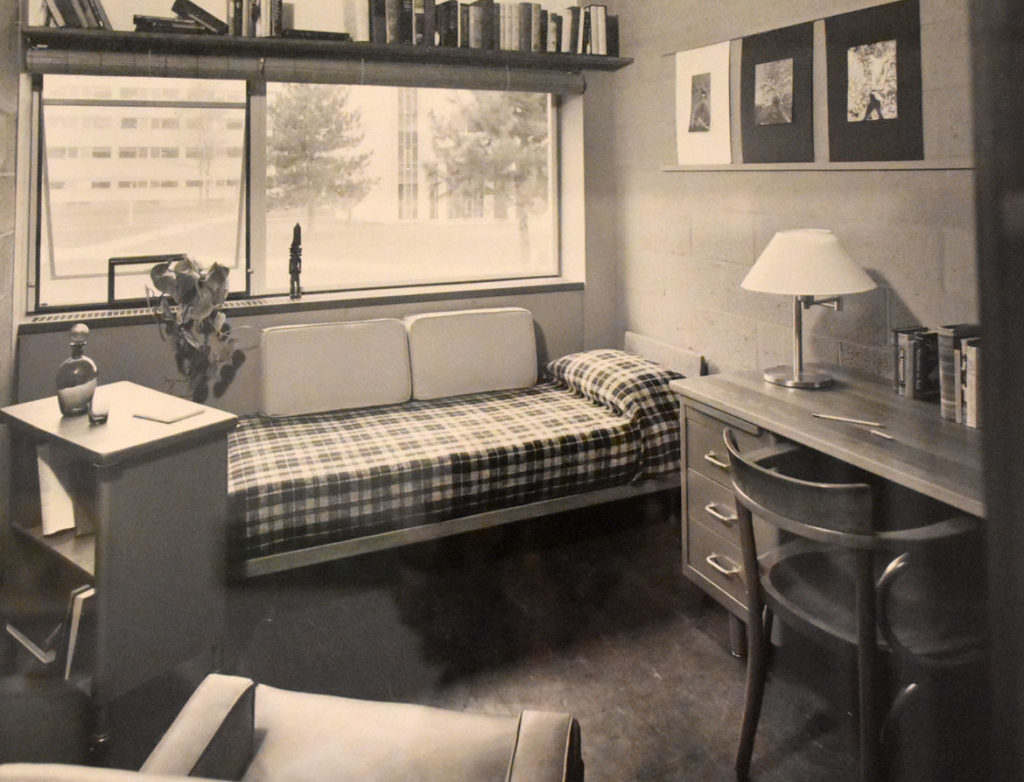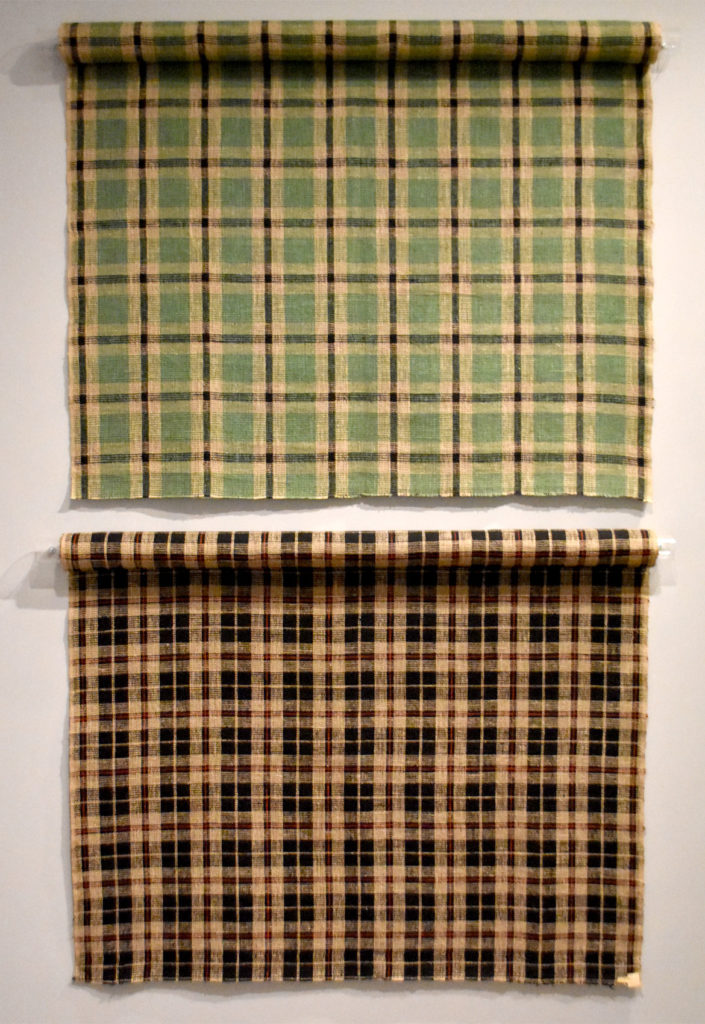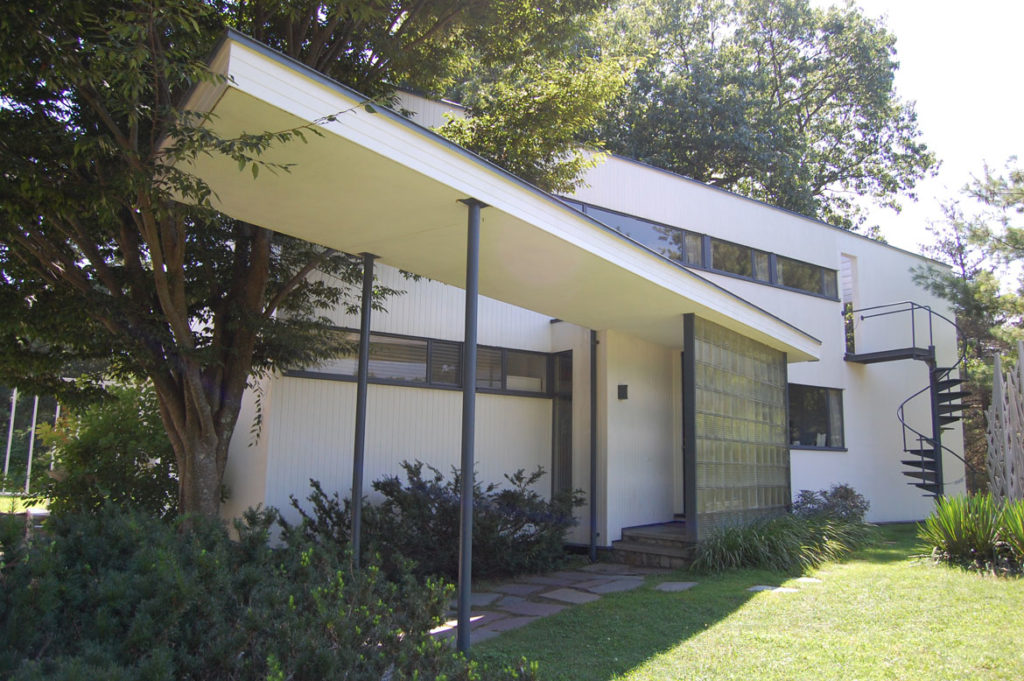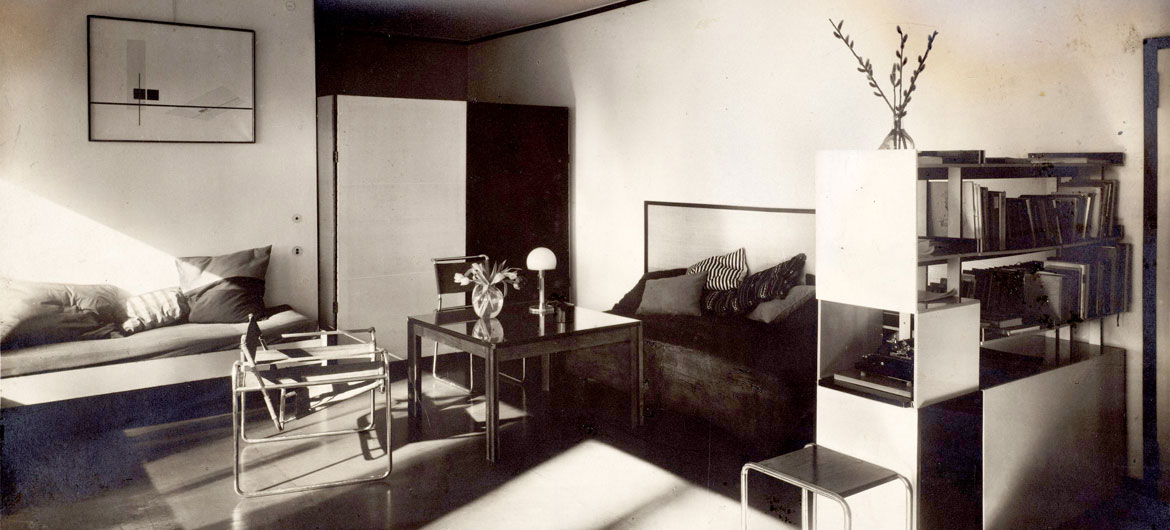“Let us create a new guild of craftsmen, without the class distinctions which raise an arrogant barrier between craftsman and artist,” Walter Gropius wrote in the 1919 manifesto to launch the State Bauhaus in Weimar, Germany. “Together let us conceive and create the new building of the future, which will embrace architecture and sculpture and painting in one unity and which will rise one day toward heaven from the hands of a million workers like the crystal symbol of a new faith.”
Though the Bauhaus—German for “building house” or “school of building”—operated for just 14 years before it was forced to close by the Nazis in 1933, it is considered “the 20th century’s most influential school of art, architecture and design,” according to the organizers of “The Bauhaus and Harvard,” on view at the Harvard Art Museums in Cambridge from Feb. 8 to July 28, 2019.
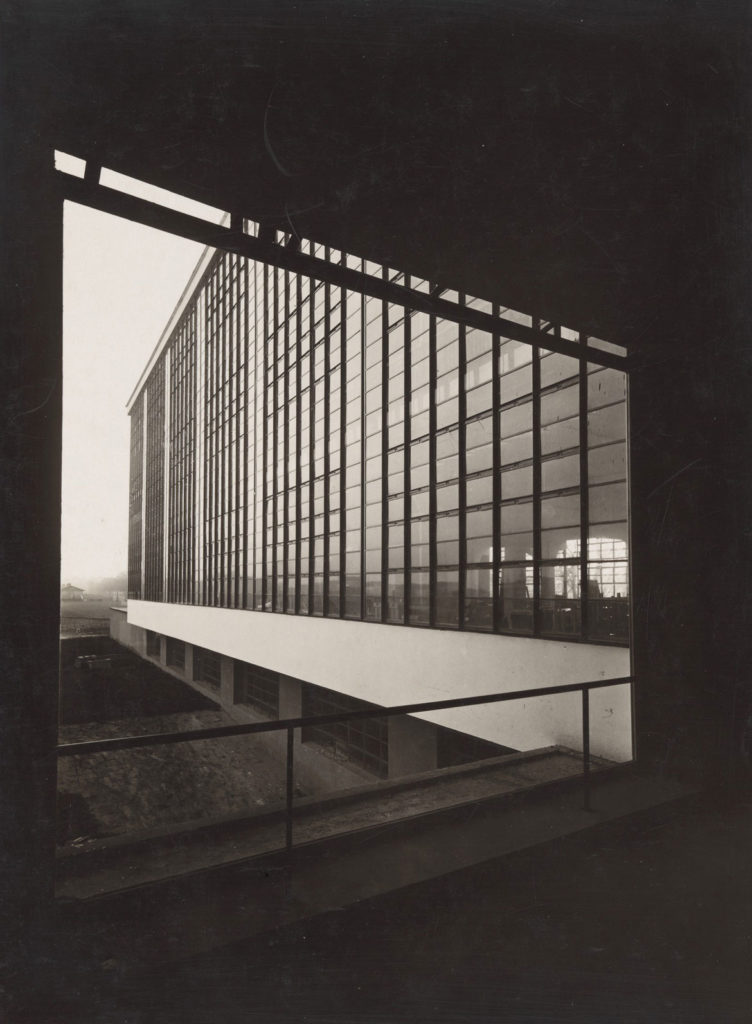
It’s one of the many shows around the world marking the centenary of the school’s founding. There’s also “Radical Geometries: Bauhaus Prints, 1919-33,” at Boston’s Museum of Fine Arts from Feb. 9 to June 23, 2019, featuring 60 prints, drawings, photographs, and postcards. And “Arresting Fragments: Object Photography at the Bauhaus,” coming to Cambridge’s MIT Museum from March 28 to Sept. 1, 2019, explores Bauhaus photography, graphic design and books.
“The Bauhaus is an answer to the question: how can the artist be trained to take his place in the machine age,” according to the catalogue for the Museum of Modern Art in New York’s 1938 exhibition “Bauhaus 1919-1928,” which was edited by former Bauhaus staff Herbert Bayer, Ise Gropius and Walter Gropius.
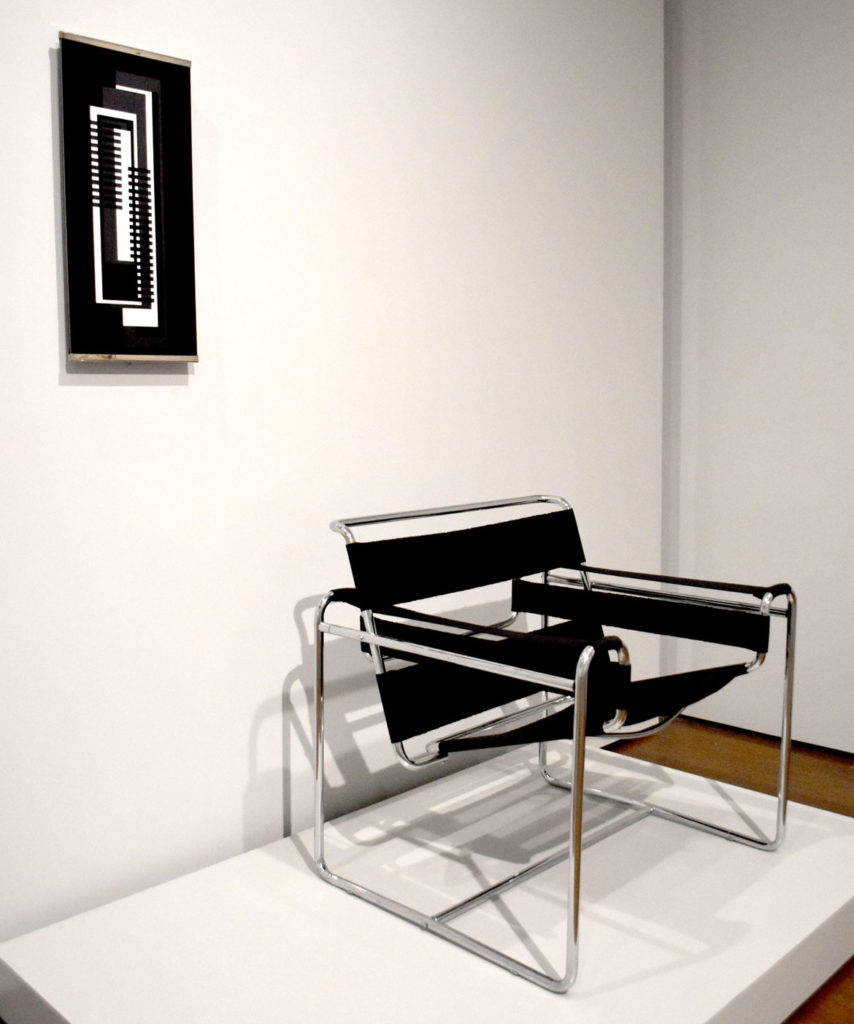
The Bauhaus, the catalogue said, “courageously accepted the machine as an instrument worthy of the artist.” It “faced the problem of good design for mass production,” “It bridged the gap between the artist and the industrial system,” and “It broke down the hierarchy which had divided the ‘fine’ from the ‘applied’ arts.”
It was an incubator of modernity—in how it taught and in the art and design its students and staff produced: mechanical, minimalist, flat, graphic, geometric, “rational,” black, white and gray.
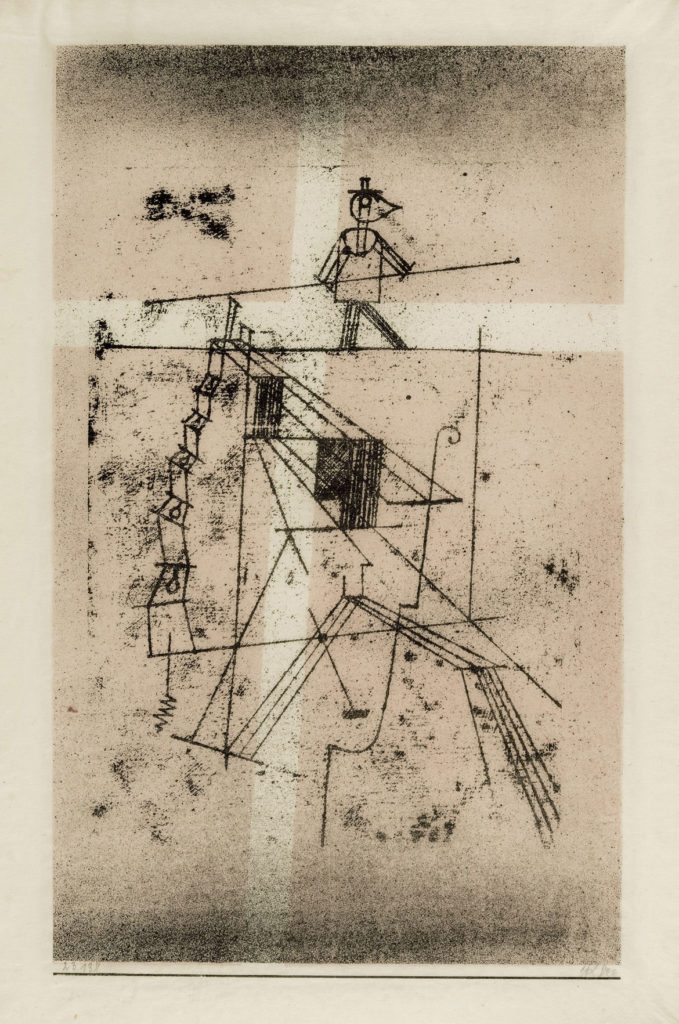
The Harvard exhibition features nearly 200 objects by more than 70 artists. The school’s international stars are here—Gropius, Marcel Breuer, Anni Albers, Josef Albers, Wassily Kandinsky, Paul Klee, Lyonel Feininger, László Moholy-Nagy, Gunta Stölzl, Lucia Moholy, Oskar Schlemmer, Herbert Bayer. “With this exhibition,” curator Laura Muir notes, “we really wanted to get to some of the other artists, especially some of the women artists who were so successful, but were overlooked historically.” The school she notes, “was open to women students, which a lot of art schools at the time were not open to women.” (Though, women were funneled into the weaving workshop over other programs, and “Men were kind of discouraged from joining the weaving workshop,” Muir says.)
If this is the kind of coverage of arts, cultures and activisms you appreciate, please support Wonderland by contributing to Wonderland on Patreon. And sign up for our free, weekly newsletter so that you don’t miss any of our reporting.

Architect Walter Gropius formed the Bauhaus in 1919 by merging the schools of fine and applied arts in Weimar. He aimed to unite architects, artists and artisans in a modern, utopian version of a medieval craft guild. “Training began with an experimental foundation course on basic design principles,” the MFA exhibit explains, “followed by practical experience in workshops for a range of media: wood, metal, ceramics, glass, and textiles, as well as stage design, wall painting, and photography. The graphic arts—printmaking, book design, and typography—held an equally important position in the curriculum.”
The Harvard exhibition features student exercises in values and color and their interactions as well as Hannes Beckmann’s 1950 recreation of an assignment (destroyed in World War II) that he made for Josef Albers’s preliminary course: create a freestanding sculpture using a single sheet of brass and a pair of sheers.
In 1922, Gropius announced that the school would shift its focus from the “return to the crafts” to “contact with industry and the practical work of the world.” The first major Bauhaus exhibition, held in Weimar in summer 1923, proclaimed the theme of “Art and Technology: A New Unity.”
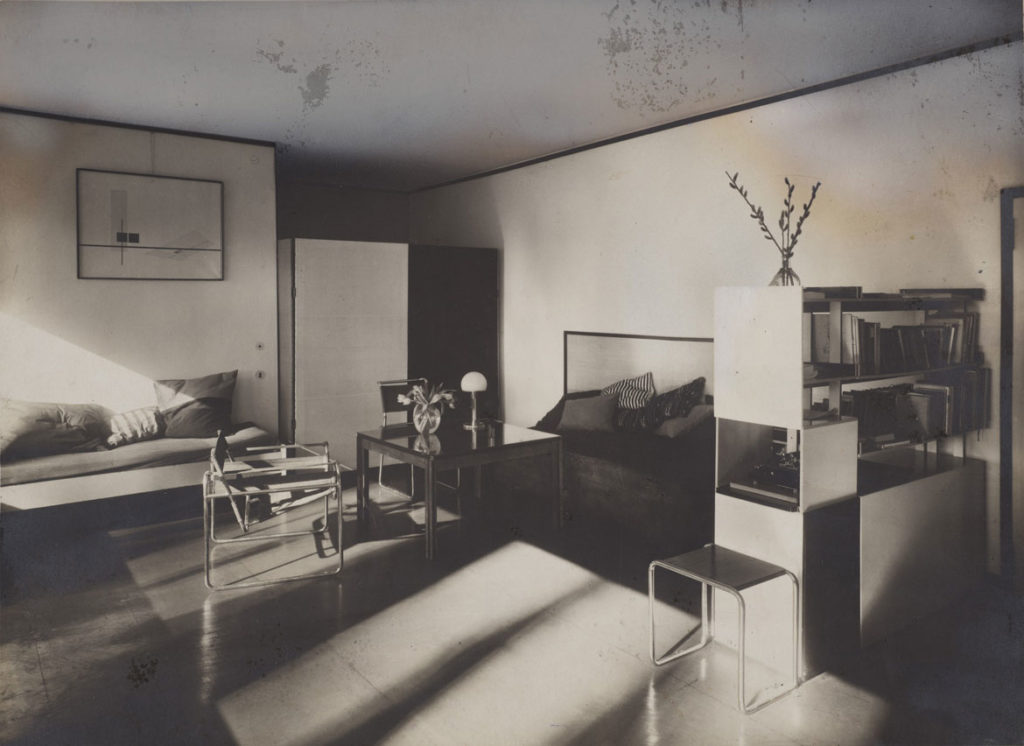
From early on, the Bauhaus’s striking modernity rubbed some the wrong way—and prompted charges of subversion and communism. In 1925, Weimar’s city council cut off funding to the Bauhaus. So school leaders decided to relocate the school to the German industrial city of Dessau that spring, at the invitation of the mayor and community leaders there. The school built a new campus in Dessau following Gropius’s designs—as well as low-cost Bauhaus-designed housing for factory workers. The structures—and Lucia Moholy’s photos of them—offered a model of how the Bauhaus envisioned modern living: spare, boxy, geometric, unadorned, industrial. “They weren’t just providing nice housing for grad students,” Muir says. “They were really used as promotional materials for the Bauhaus.”

At the Society of Decorative Artists exhibition in Paris in 1930, Muir says, for the first time since the First World War, the French invited Germans—represented by the Bauhaus—to show. The Germans felt they couldn’t compete with the France’s luxury handmade objects, but with their manufactured goods, they aimed to say, “We were devastated economically, but we recommitted to creating mass design for everyone,” Harvard curator Melissa Venator says. “It was full of symbolic and diplomatic import.”
By the time of the Paris exhibition, the Bauhaus was already beginning to fracture. Gropius stepped down as director in 1928, succeeded by architect Hannes Meyer. He left in 1930 under pressure from a right-wing Dessau government and was replaced by architect Ludwig Mies van der Rohe. When Dessau’s city council cut off funding for the Bauhaus in 1932, van der Rohe moved it to Berlin. The following year, the Nazis accused the Bauhaus of anti-government activity and forced the school to close for three months. The Harvard exhibition reports, “On July 20, the faculty vote unanimously to dissolve the Bauhaus.”
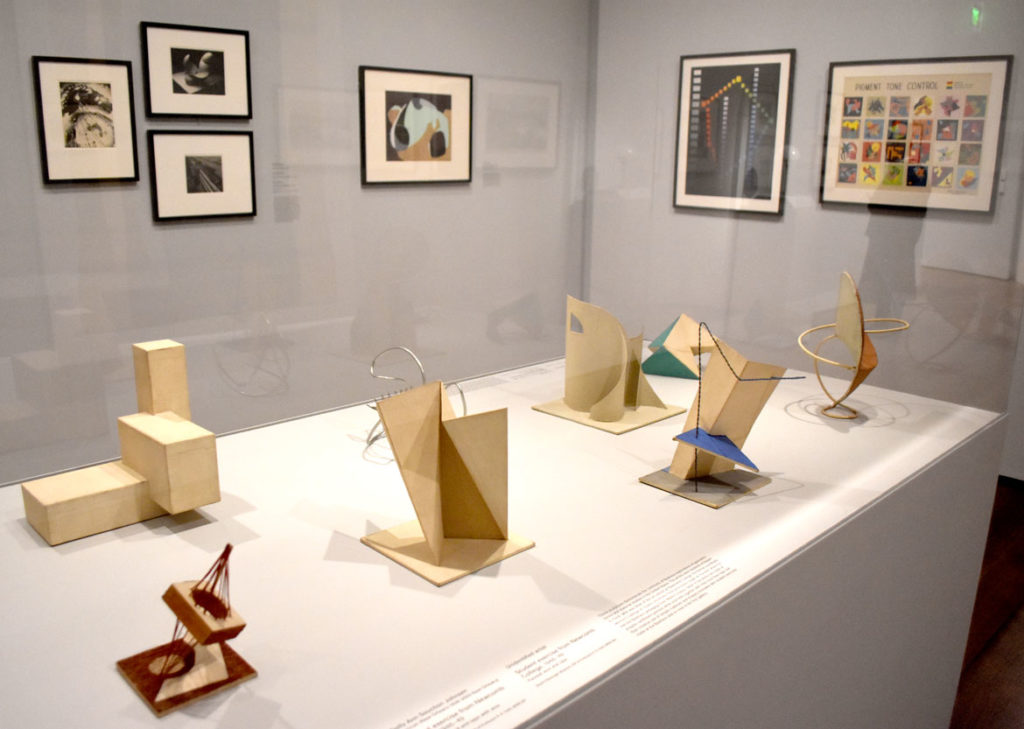
The Harvard exhibition explores the aftermath. Josef and Anni Albers moved to North Carolina to teach at Black Mountain College in 1933. (Josef later taught at Yale.) In 1937, Gropius joined Harvard’s Graduate School of Design and Moholy-Nagy established the New Bauhaus in Chicago. Mies van der Rohe taught at Illinois Institute of Technology and designed its Chicago campus. Breuer also landed at Harvard. They brought Bauhaus pedagogy with them—a focus on modernism, on machines and mass production, a focus on the integration of the arts and on the fundamentals of design. “Art schools were forever transformed by the Bauhaus,” Muir says.
Lynette Roth, head of the Harvard Art Museums’ modern and contemporary art division, describes Harvard’s Bauhaus holdings as the “largest collection of Bauhaus outside of Europe.” Gropius began working with Harvard’s Germanic Museum (later the Busch-Reisinger) to assemble a Bauhaus collection at Harvard in 1948, drawing on his network of friends and colleagues. Muir says, “I think it really answered a need for these artists. They wanted to preserve the legacy of this school and find a safe place for these materials.”
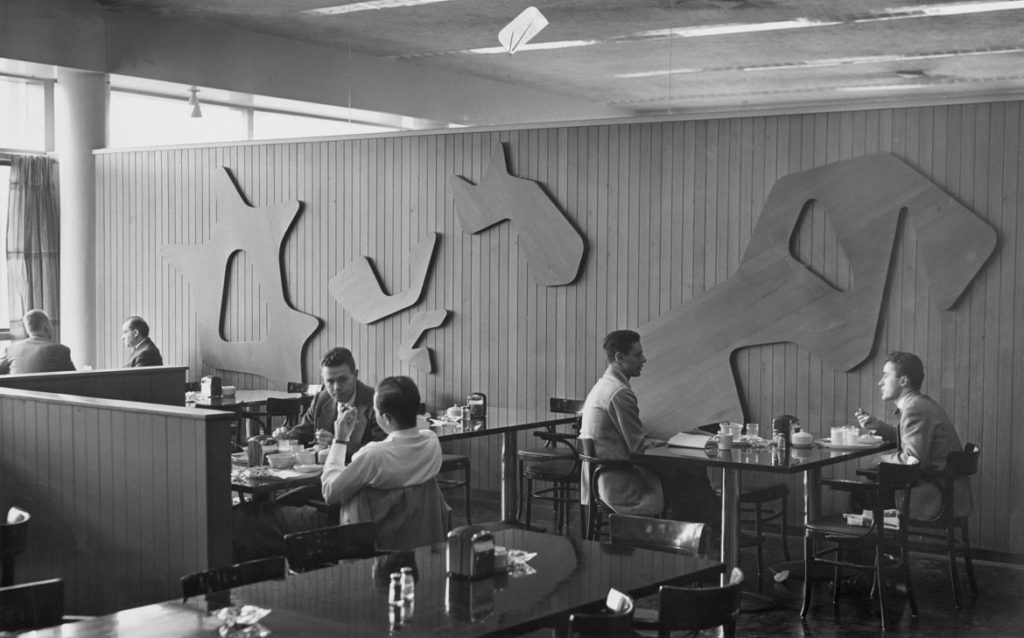
Gropius was also commissioned in 1948 to design Harvard’s Graduate Center (now the Law School’s Caspersen Center) via his Cambridge firm The Architects Collaborative. “It was the first modernist building on the Harvard campus,” Muir says. The grad student dorms and student center included murals by Joan Miro and Herbert Bayer, a redwood wall sculpture for a dining hall by Hans Arp (now installed in the Harvard exhibition), and plaid bedspreads designed by Anni Albers. “She designs something that is exquisite and beautiful, but also very functional,” Muir says. The overall project “was really the realization of a lot of Bauhaus ideas in terms of incorporating modern art, modern architecture and design.”
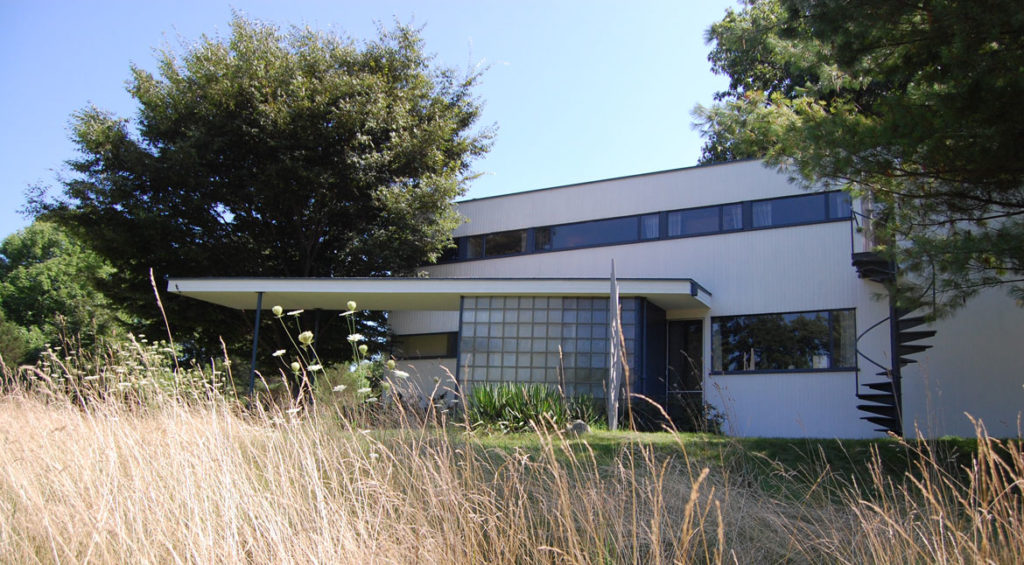
If you really want a sense of what Bauhaus living meant, visit the Gropius House in Lincoln, Massachusetts, which Gropius designed as his family home in 1938 and is now a National Historic Landmark operated by Historic New England. Bauhaus furnishings often seem cool and uncomfortable. But inside Gropius’s boxy, flat-roofed building, the geometric furnishings are swaddled in soft, cozy furs, weavings, rugs. And there are smart little touches, like the radiator in the upstairs bathroom arranged so that it warmed towels.
If this is the kind of coverage of arts, cultures and activisms you appreciate, please support Wonderland by contributing to Wonderland on Patreon. And sign up for our free, weekly newsletter so that you don’t miss any of our reporting.


